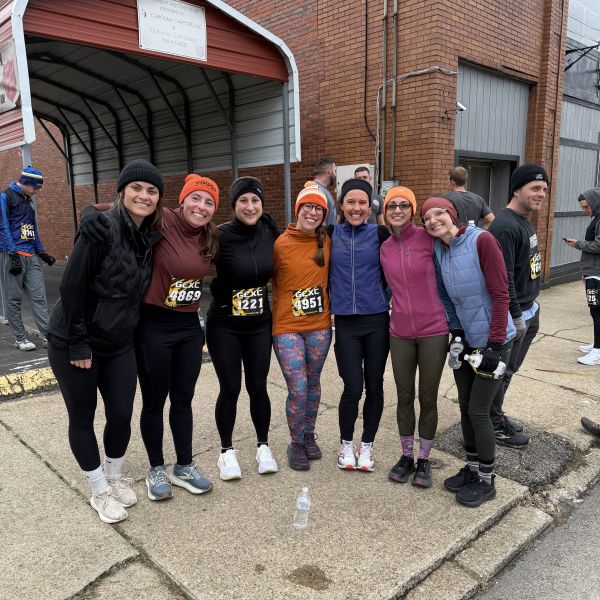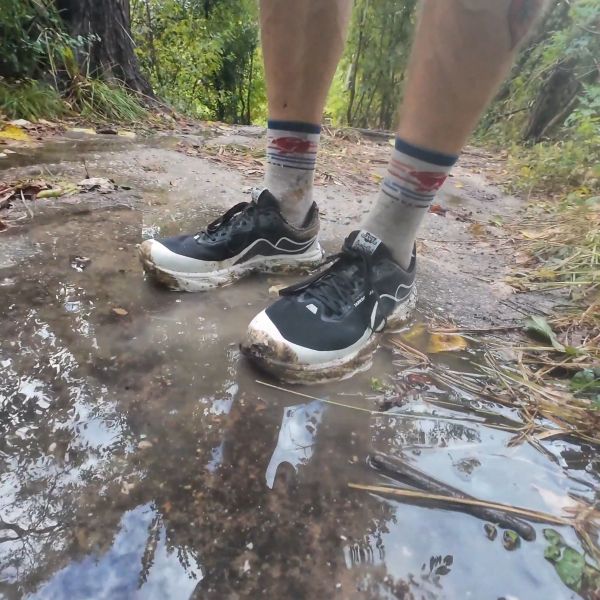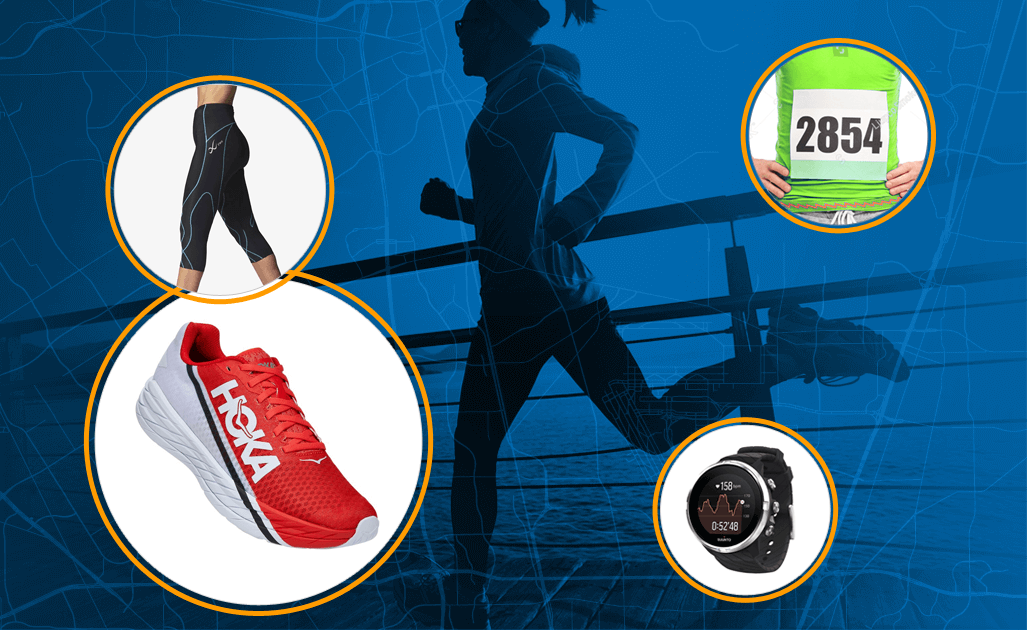Can you be a multi-sport athlete and still be a great runner?
You’ve probably heard the common phrase, “Jack of all trades, master of none.”
Most people view this sentiment as a warning against trying to do too much or spread ourselves too thin.
This makes sense in many cases, because quantity often comes at the sacrifice of quality.
Attempting to meet multiple goals can feel like juggling while on a tightrope: a careful balancing act that carries the risk of losing everything with just one wobble.
For most athletes, walking that tightrope usually isn’t worth the risk.
Can you be a multi-sport athlete and run, lift, climb, bike, swim, or anything else, and perform well in every sport?
Allocating energy wisely as an athlete usually means sticking to activities that pertain directly to our sport.
For instance, runners who focus solely on running should center most of their training around - you guessed it - actually running.
Any smart training plan does involve cross-training, but just enough to prevent injury and build relevant strength.
The key word here is “relevant,” meaning that cross-training and strength development for running should ideally still train, or help to balance out, the same movements and muscles that we use in running.
Unnecessary extra activity that doesn’t serve a specific running purpose likely pushes runners further away from their running goals by wasting energy.
This strategy speaks to the basic formula for single-track athletes, not the multi-sport athlete.
By channeling their drive—both physical and mental—into the factors that matter most, runners can make their training as effective as possible.
Trimming the fat and cutting the fluff means being able to dedicate more time and effort to productive training and recovery.
However, there’s a lesser-known second half to that phrase:
“A Jack of all trades is a master of none… but sometimes better than a master of one.”
A single-track focus offers the most consistent and reliable approach to progress, but some people have more than one true athletic passion. For them, the benefits of being a Jack of All Trades may very well outweigh the costs.
I consider myself both a dedicated trail runner and committed rock climber.
Climbing has been my first love ever since spending my teenage years scrambling around on riverside boulders before truly “learning the ropes” as part of the University of Virginia Outdoors Club.
Climbing quickly became my main outlet for all things physical, intellectual, emotional, and social because of the unique perspective I discovered through my time on the wall.
The particular sensations that followed from teaching my body and mind to:
I began to build my entire life—present and future—around climbing so that I could pursue it wholeheartedly.
For a while, I did take the single-track path. When I first started running, I only dabbled enough to maintain basic cardiovascular fitness for long days in the mountains or on the rock. I enjoyed it as a side-hustle confined to the wings while climbing held the main stage.
Running stuck by my side for years no matter how little time I spent on it.
Short jogs around my college grounds and trail jaunts along the Blue Ridge Parkway offered a way to shake out tense muscles between climbing days.
I was perfectly content keeping things casual with running - after all, I’d already found my one true love.
But one day, like the hot-shot jock waking up to the girl next door, running suddenly turned into more than just a fling.
I went on that one transformative run that every runner knows well, the kind of run that feels so fluid that nothing else seems remotely natural in comparison.
Endless forward motion, steady and strong, was the only future I could imagine for myself in that moment. It seemed like it would take more effort to stop the momentum than to keep it up forever.
Ten miles later, I did finally stop… and oh boy, did I find myself in a world of pain.
Turns out that not even the most magical mental state can negate the physical shock of tripling my typical running volume in one go.
Despite the aching hamstrings and hobbled hips that hung around for a week, I knew I’d stumbled upon something special.
I found myself neglecting the climbing sessions that I’d usually move heaven and earth for, so that I could sneak in a few more miles between classes or link together longer loops out of spurs off the Appalachian Trail.
The high returned every time that I ventured out for a run, albeit at a lower intensity than on that momentous day but plenty strong enough to keep me hooked.
I discovered that running could offer me similar sensations to those I’d found in climbing: a brush with infinity, a taste of resilience, and a bridge to autonomy.
Maybe I could be a multi-sport athlete, enjoy running and climbing, and excel at both.
Similar, but not the same. I missed climbing for the way that it literally took me to new heights in body and mind.
I realized that I hadn’t just flitted from one flirtation to another; I’d actually fallen in love with both.
Climbing and running each served their own purpose: running opens the floodgates to my deepest thoughts and climbing lifts me high enough to transcend all thought.
Once I’d settled on the nature of my true feelings, then came the difficult part: Navigating the careful balance between the two.
I couldn’t imagine my life without holding one just as closely to my heart as the other, so I stopped trying to fit myself into the single-track box. I was in for a widely ill-advised challenge.
I haven’t yet settled on the perfect equilibrium, but I’ve made solid progress toward that goal over the years since giving myself full permission to pursue athletic polyamory.
Together with running coach and fellow multi-sport athlete Kelly Lutz, we’ve gathered a handful of tips for other runners who just can’t be tied down.
There’s absolutely no need to stray from the single-track unless your passions dictate it.
If you’re just starting to pick up another sport because you think you “should” for whatever reason, like...
The very possible consequences of spreading ourselves too thin, from run-of-the-mill stress and fatigue to more serious dangers like overtraining and endocrine damage, are only worth the potential risk in the name of legitimate passion.
Otherwise, save yourself for the running that you love more deeply than anything else.
If you do hold that genuine passion for running alongside another sport, introduce the blend slowly.
It’s important to give yourself the chance to physically and mentally adapt to the collective load.
“The hardest part of trying to do two sports is the very beginning,” Kelly agrees. “Of course you’re tired: your body isn’t used to it yet! Give it time to sink in.”
“The hardest part of trying to do two sports is the very beginning. Of course you’re tired. Your body isn’t used to it yet! Give it time to sink in.”
—Ultrarunning Coach Kelly Lutz
I continued on my path despite those worries, because I at least wanted to see it through for the sake of knowing what might or might not work for me.
I swallowed my pride (the hardest part…) and forged ahead.
After months of practice alongside plenty of self-compassion, I came out the other side both faster on my feet and stronger on the rock than I’d ever felt before.
Even more important than that, working through that process left me with a strong sense of fulfillment and confidence.
While this doesn’t necessarily mean shoving one to the side so that the other can steal the entire spotlight, it does sometimes translate to letting one take a bit more of your time and energy in the short term in order to accomplish your goals in their due time.
We can’t always have it all, all at once. We stand a much better chance of having it all over time.
Even armed with a perfectly planned schedule, all that training takes a lot of time.
For those of us who aren’t professional athletes, we don’t have all the time in the world to dedicate to our training.
To keep from spending entire days bouncing from one training session to another with no room for anything else of value in between, Kelly suggests the following:
Ever heard the phrase, “no junk miles”? Make every moment count by staying focused and always putting your best foot forward.
It’s important to remember, though, that your best foot won’t always feel the same from day to day.
All this training as a multi-sport athlete spread out over two sports will inevitably exhaust and deplete you at some point.
“Go into your run with your goal in mind, but listen to your body,” Kelly advises. “Taking more rest every once in a while won’t affect your plan overall, but will help with preserving energy and balance in the long run.”
“Go into your run with your goal in mind, but listen to your body. Taking more rest every once in a while won’t affect your plan overall, but will help with preserving energy and balance in the long run.”
—Ultrarunning Coach Kelly Lutz
Even when everything goes according to plan, some days just won’t feel as awesome as others - and that’s ok too.
Training adaptations in any sport occur over time, not as the result of any one day on its own. Ride out the plateau periods and trust that the ebb and flow each have their own place in the process.
As a multi-sport athlete who coaches other runners balancing multiple training interests like skiing and climbing, Kelly emphasizes that it all comes down to individuality.
“I’m all about giving athletes the freedom to do what they want,” she explains. “Why else are we even here? You shouldn’t have to give up something else that you love just because you have a race on the calendar… Set your sights, give it a try, and don’t be afraid to experiment to see what actually works for you.”
Are you a multi-sport athlete? Tell us about it in the comments.

Login to your account to leave a comment.





We Want to Give it to You!
